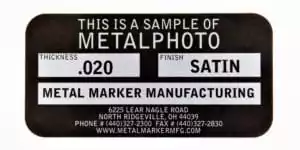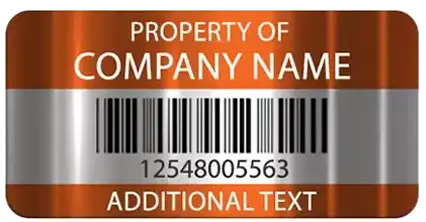Table of Contents
ToggleIntroduction
Foil aluminium asset tags are one of the most trusted tools for tracking and protecting valuable equipment. They’re lightweight, durable, and built to last even in harsh environments. Whether you manage IT equipment, industrial machinery, or rental assets, foil aluminium labels offer the strength and flexibility you need.
This guide will cover everything: what they are, how they’re made, materials, printing methods, adhesives, finishes, customization, and best practices.
What Are Foil Aluminium Asset Tags?
Foil aluminium asset tags are thin, flexible labels made from real anodized aluminium. They’re designed to stick securely to a wide range of surfaces and endure tough conditions, including weather, abrasion, and chemicals.
These tags are most often used to track:
Laptops and office equipment
Tools and light industrial gear
Storage bins and racks
IT hardware like servers and routers
How Foil Aluminium Tags Are Made
Material Composition
Base Material: 0.003″ to 0.005″ anodized aluminium foil.
Anodized Layer: An electrochemical treatment creates a hard, porous oxide layer on the surface.
The anodized layer is the secret to the tag’s durability. It locks in images and protects the tag from corrosion, UV rays, and harsh chemicals.
Imaging Methods
There are two main ways the barcodes, serial numbers, and text are applied:
1. Metalphoto® Process (Most Durable)
The anodized surface is coated with a photo-sensitive emulsion.
A film negative of the design (barcode, serial number, etc.) is placed over the foil.
The material is exposed to light and developed, embedding the image into the aluminium.
The tag is sealed by boiling in deionized water.
Advantages:
Graphics are embedded below the surface.
Resistant to fading, scratching, and chemicals.
20+ years durability even outdoors.

. Digital Printing
High-resolution UV-cured ink is printed onto the surface.
A protective clear coat is applied.
Advantages:
Lower cost.
Suitable for indoor or low-wear environments.
Drawback:
Shorter lifespan (1–5 years).

Chemical Properties & Durability
Corrosion Resistance: The oxide layer protects against rust and oxidation.
Chemical Resistance: Handles exposure to oils, cleaners, and solvents.
Non-Conductive Surface: Once anodized, it does not conduct electricity.
pH Range: Typically withstands pH 4 to 9.
These properties make foil aluminium tags suitable for both indoor and outdoor use.
Finishes Available
Matte Finish: Reduces glare; ideal for barcode scanning.
Brushed Finish: Textured, premium look.
Gloss Finish: Rare for foil tags but possible for custom jobs.
Choosing the right finish depends on the look you want and how you’ll be scanning or reading the tags.
Adhesive Options
Choosing the right adhesive is critical to the performance of your asset tags.
Permanent Acrylic Adhesive: Bonds strongly to metals, plastics, and painted surfaces.
High-Performance Adhesive: Survives extreme temperatures and outdoor exposure.
Foam Adhesive: Fills gaps on rough surfaces.
Tamper-Evident Adhesives: Leave a “VOID” mark or break apart if removed.
Important: Always clean and dry the application surface before sticking a foil tag.
Customization Options
You can fully customize foil aluminium tags to meet your tracking needs:
Serial Numbers: Unique for every asset.
Barcodes: Code 39, Code 128, Data Matrix, or QR Codes.
Company Logos: Printed in black or full color.
NFC or RFID Inlays: Embedded under a protective overlay.
Custom Sizes and Shapes: Die-cut to fit special applications.
Pre-Drilled Holes: For screw, rivet, or mechanical mounting.
Best Use Cases for Foil Aluminium Asset Tags
IT asset tracking (laptops, servers)
Construction equipment
Medical devices
Storage and warehouse systems
Telecom and utilities infrastructure
Foil Aluminium vs Rigid Aluminium Plates
| Feature | Foil Aluminium Labels | Rigid Aluminium Plates |
|---|---|---|
| Flexibility | Flexible, conforms to curves | Solid, rigid |
| Mounting | Adhesive-backed | Screws, rivets, adhesive |
| Durability Level | High | Extreme |
| Cost | Lower | Higher |
| Best For | Light to medium-duty | Heavy-duty, outdoor, or military use |
Conclusion
Foil aluminium asset tags offer a strong, flexible, and highly customizable solution for asset tracking. They resist the elements, endure rough handling, and keep your information safe and scannable for years.
If you need reliable labels for your equipment, but don’t want the bulk or cost of rigid metal plates, foil aluminium is the clear choice.
